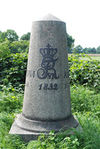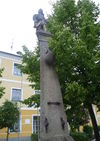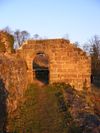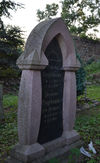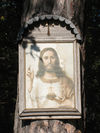MENTZ GmbH/Modellierungsvorschläge POI extra
On this page you can find the rarely used points of interest, which are in relation with mapping railway stations. The list is constantly being updated by the OSM-Community and therefore it is always up-to-date. The aim is to reflect the guidelines for modeling real features. We are thankful for any annotations and comments: MENTZ Kontakt
Access to our other topics:
Points of Interest in OSM
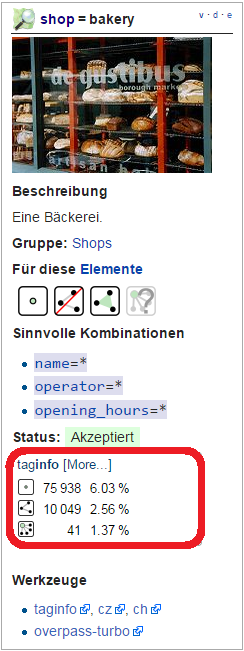
Basics
This page should provide an overview about the POIs, which are used in OSM. By clicking on an element (POI-Tag) ,a detailed description, the most common application and the possible combinations with other tags will be shown.
Use
On the top right is always an information box, where the most important elements of a feature can be found.
Below is a list with tags, which are usually being combined with the feature. Furthermore we can see, if the POI should be used as a node, way, closed way (area=yes) or as a relation. Finally it is also stated, if the POI is accepted.
It is possible, that some tags are automatically implicated. An Anliegerstraße has always additional tags, e.g. foot=*, bicycle=* und access=*). Other useful additional tags like the street name (name=*) or oneway streets (oneway=*) are suggested as well.
The possibilites of adding more tags is unlimited, but for every element the most useful tags have enforced in the community. In our example with the street, the tags (maxspeed=*), (lanes=*) and (surface=*) have enforced.
POI
Craft
This is used as a place that produces or processes customised goods. See the page Crafts for more information on the usage of these tags.
This table is a wiki template with a default description in English. Editable here.
Emergency
This is used to describe the location of emergency facilities and equipment. See the page Emergency for an introduction on its usage.
Medical rescue
This table is a wiki template with a default description in English. Editable here.
Firefighters
See also amenity=fire_station.
This table is a wiki template with a default description in English. Editable here.
Lifeguards
This table is a wiki template with a default description in English. Editable here.
Assembly point
This table is a wiki template with a default description in English. Editable here.
Other structure
This table is a wiki template with a default description in English. Editable here.
Historic
This is used to describe various historic places. For example: archeological sites, wrecks, ruins, castles and ancient buildings. See the page titled Historic for an introduction on its usage.
| Key | Value | Element | Comment | Rendering | Photo |
|---|---|---|---|---|---|
| historic | aircraft | A decommissioned aircraft which generally remains in one place | |||
| historic | aqueduct | A historic structure to convey water | |||
| historic | archaeological_site | A place in which evidence of past activity is preserved | |||
| historic | battlefield | The site of a battle or military skirmish in the past. This could be on land or at sea. | |||
| historic | bomb_crater | A bomb crater. | |||
| historic | building | If it's not clear what type a historic building has, it can be tagged as a generic building. | |||
| historic | cannon | A historic/retired cannon. Usually found at on forts or battlefields. | |||
| historic | castle | Castles are (often fortified) buildings from medieval and modern times. Other languages | |||
| historic | castle_wall | A |
|||
| historic | charcoal_pile | Historic site of a charcoal pile. Often still in good condition in hilly forest areas. | |||
| historic | church | A building with historical value for Christian religious activities, particularly for worship services. | |||
| historic | city_gate | A |
|||
| historic | citywalls | A |
|||
| historic | farm | A historical farm, kept in its original state. | |||
| historic | fort | A military fort – distinct from a castle as it is generally more modern | |||
| historic | gallows | A structure designed for capital punishment by hanging. | |||
| historic | highwater_mark | A marker for indicating past flood. | |||
| historic | locomotive | A decommissioned locomotive which generally remains in one place. | |||
| historic | manor | Historic |
|||
| historic | memorial | Much like a monument, but smaller. Might range from a WWII memorial to a simple plate on a wall. | |||
| historic | mine | Abandoned underground mine workings for minerals such as coal or lead. | |||
| historic | mine_shaft | Vertical shafts of a historic mine | |||
| historic | milestone | A historic marker that shows the distance to important destinations. | |||
| historic | monastery | An historic monastery. See Also amenity=monastery. | |||
| historic | monument | A memorial object, which is especially large (one can go inside, walk on or through it) or high enough (see the examples), built to remember, show respect to a person or group of people or to commemorate an event. Other languages | |||
| historic | optical_telegraph | Historic optical telegraph | |||
| historic | pillory | A construction designed to immobilitate and humiliate a person who was convicted in lower courts. | |||
| historic | railway_car | A decommissioned railway car which generally remains in one place. | |||
| historic | ruins | Remains of structures that were once complete, but have fallen into partial or complete disrepair. If the type of original structure is known or apparent it can be described using ruins=*, e.g. ruins=castle. Alternative tagging is historic=castle, ruins=yes. |
|||
| historic | rune_stone | A |
|||
| historic | ship | A decommissioned ship or submarine | |||
| historic | stone | A stone shaped or placed by man with historical value. | |||
| historic | tank | A decommissioned tank which generally remains in one place. | |||
| historic | tomb | Historic tomb | |||
| historic | tower | Historic tower | |||
| historic | |||||
| historic | vehicle | A decommissioned land-based vehicle which generally remains in one place | |||
| historic | wayside_cross | A historical (usually christian) cross. Frequently found along the way in Southern Germany, Austria and probably elsewhere. | |||
| historic | wayside_shrine | A historical shrine often showing a religious depiction. Frequently found along the way in Southern Germany, Austria and probably elsewhere. | |||
| historic | wreck | Nautical craft that has unintentionally been sunk or destroyed. | |||
| historic | yes | Used to add the historic significance of the objects described by other tags. | |||
| historic | user defined | All commonly used values according to Taginfo |
This table is a wiki template with a default description in English. Editable here.






















